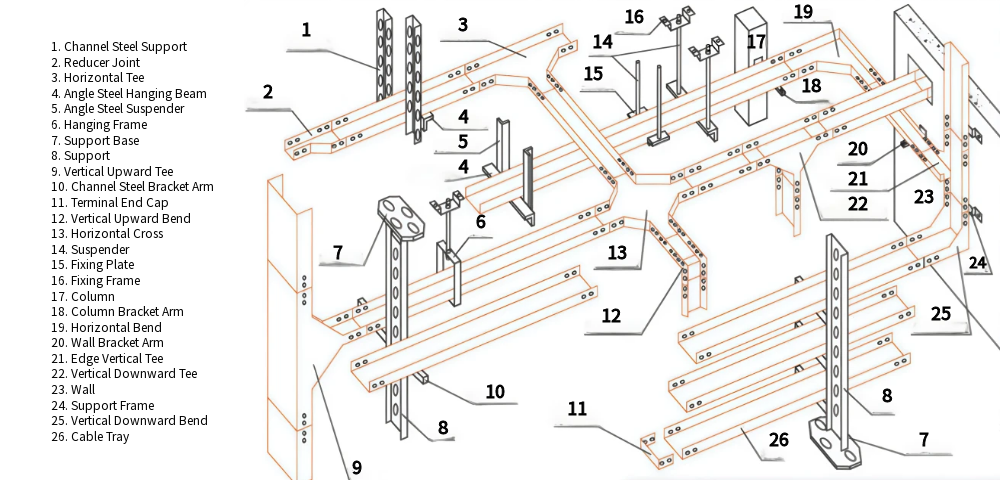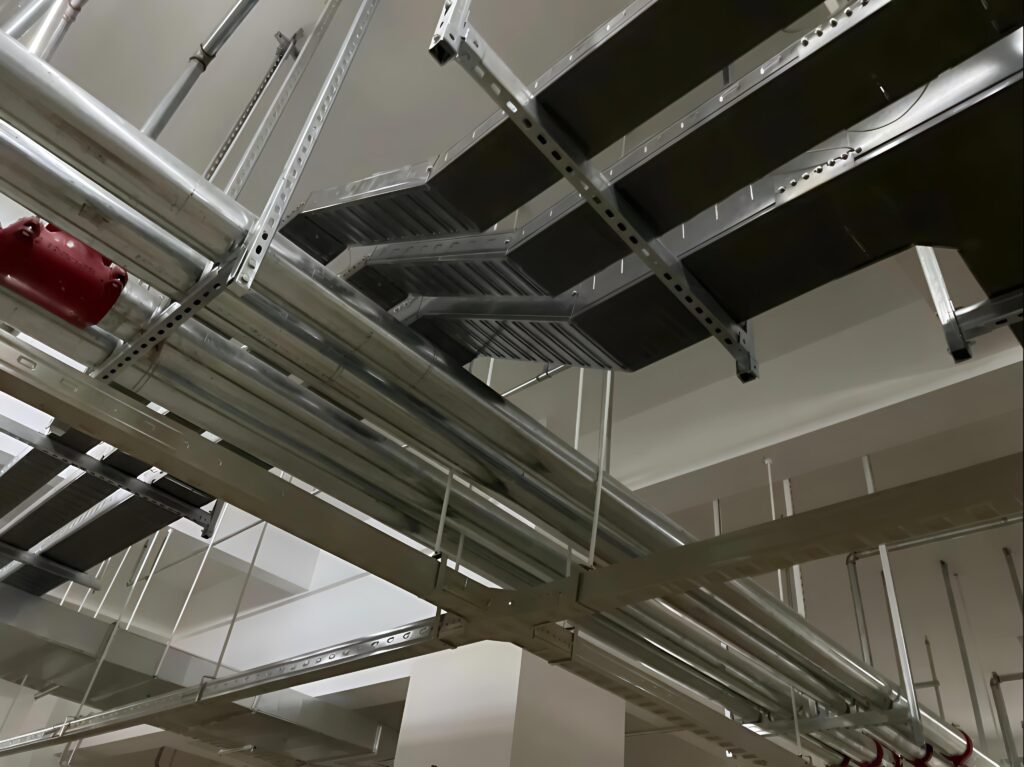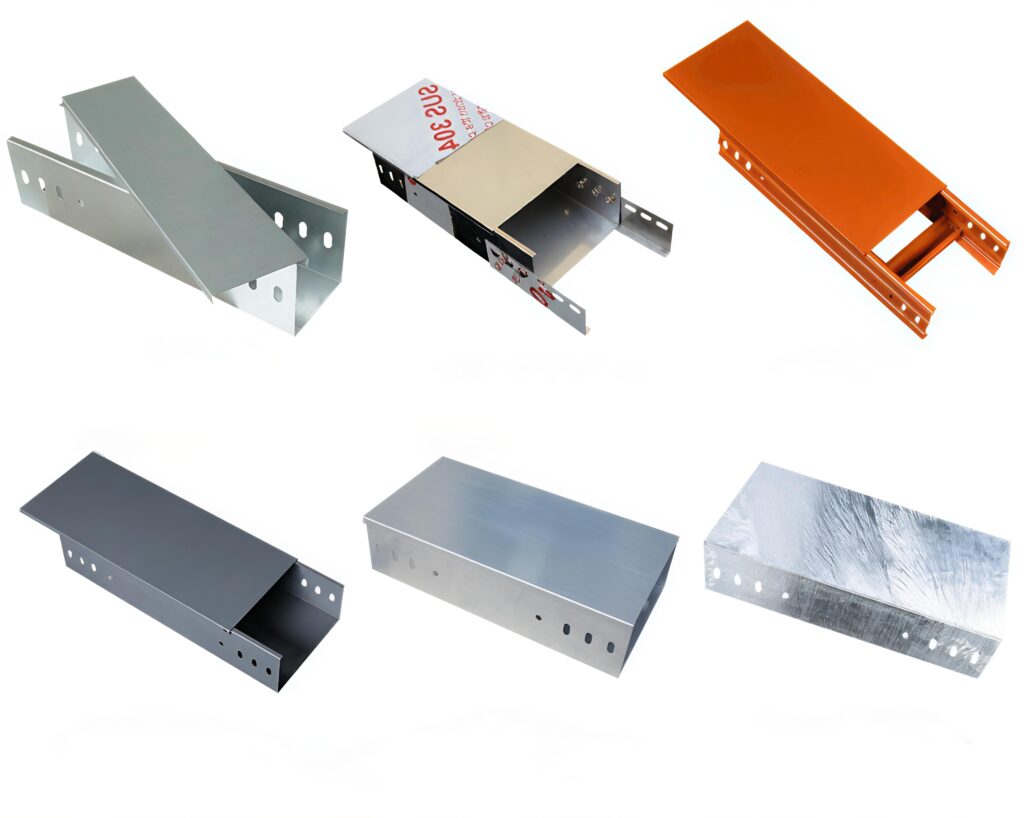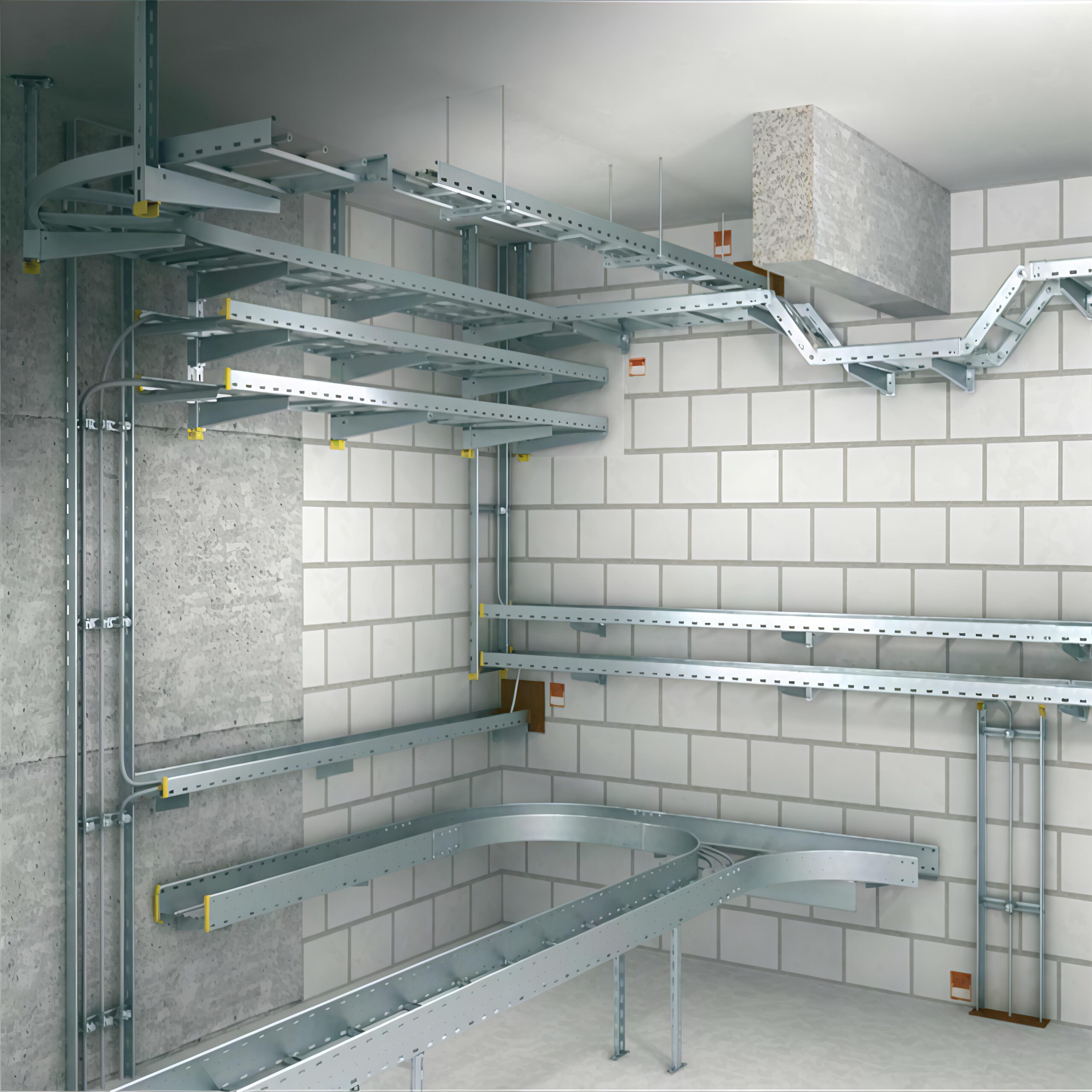A cable support system is designed to hold, organize, and protect electrical cables and wires in a variety of environments. These systems are crucial for safe and efficient cable management, preventing hazards and ensuring proper wiring in buildings, industries, and other settings.
Types of Cable Support Systems
Several types of cable support systems are available, each with its own advantages.
Cable Trays:
These are interconnected channels or trays that provide a structured path for cables, offering a robust and organized solution for cable management.
Cable Ladders:
Similar to trays, but with a more open design for better ventilation, suitable for various load capacities and environments.
Wire Baskets:
A flexible and adaptable option, particularly useful for smaller-diameter cables and in areas with complex routing needs.
Wireway:
A sealed or ventilated enclosure for protecting cables from various elements and providing a structured pathway.
Cable Runway:
A lightweight and cost-effective option for supporting cables, often used in horizontal runs and for lower-load applications.
Center-Rail Systems:
These systems offer a more flexible and adaptable solution, allowing for easy cable placement and removal.
Bridle Rings/Cable Hooks:
Designed to attach individual cables or bundles of cables to a structure, providing a quick and efficient way to secure cables in place.
Function and Benefits
Cable support systems offer numerous benefits.
Cable Management:
They help organize cables, making them easier to identify, troubleshoot, and maintain.
Protection:
They shield cables from damage, abrasion, and external elements like water, oil, or chemicals.
Safety:
They prevent tripping hazards and entanglement, improving safety in the workplace.
Aesthetics:
They help to conceal cables and create a clean, professional look.
Flexibility:
They can be adapted to various needs, from supporting power cables to data cables, and can be used in commercial, industrial, or residential settings.
Key Considerations for Design
When selecting a cable support system, several factors should be considered.
Load Capacity: The weight and type of cables to be supported.
Environmental Conditions: Exposure to harsh weather, chemicals, or other environmental factors.
Installation Location: Whether the system will be used indoors or outdoors, in a confined space, or a large open area.
Specific Needs: Whether you require a system that is easy to install, provides good cable protection, or offers a high degree of flexibility.
In summary, cable support systems are essential for safe, efficient, and well-organized cable management, offering a variety of options to suit different applications and environments.
Actually, countries are differ in development level, geographic environment, industrial standard, and etc.
For developed countries and emerging industrial countries like China, there are wide applications of calbe support system in business buildings, such as shopping mall, hotel, even there are some applications in residential buildings recent years. In these countries, the cable support system is always heavily loaded, thus the sizes of every parts of the system is bigger than that used in relatively under developed countries. In some African countries, the sizes of the parts of cable support system are relatively smaller, but more ventilation performance are always required, so there are more holes on the cable tray to cool down the temperation of cable and mitigate the effect of moisture and mycedes.






